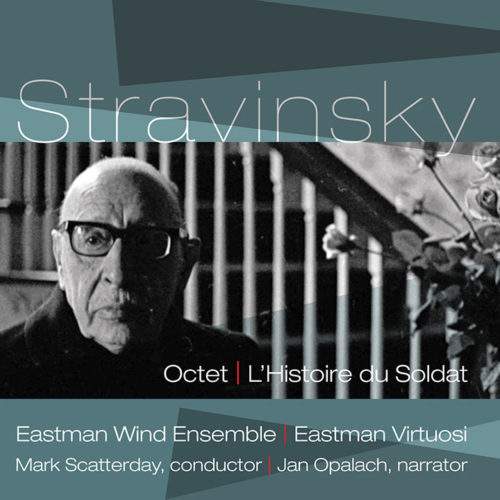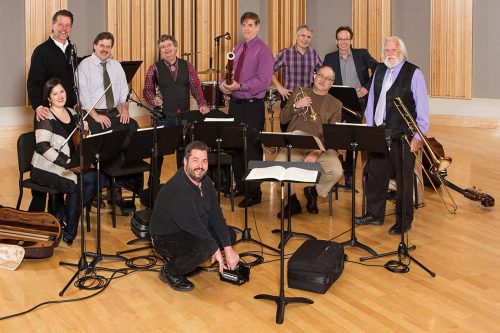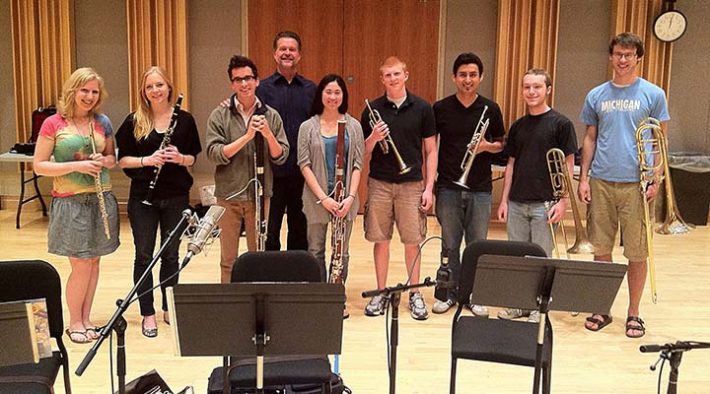Octet Stravinsky’s first professional conducting job was leading the premiere of his Octet, in a Koussevitsky Concert at the Paris Opéra on 18 October 1923 – programmed with Beethoven’s ‘Eroica’ Symphony. Many musicians who admired the powerful nationalism and neo-primitivism of Petrushka and The Rite of Spring were taken aback by this change in Stravinsky’s path; among those at the premiere were the young Aaron Copland, who later recalled his reaction to what seemed to be ‘a mess of 18thcentury mannerisms’, and Sergei Prokofiev, who sourly referred to Stravinsky’s new style as ‘Bach, but with pockmarks’.
This Octet was one of the first works in a style that Stravinsky would explore for more than two decades. It’s usually called Neoclassicism: a modern approach to the forms of Baroque and Classical music – emulating the formal regularity and tonal logic of Bach, Haydn, or Mozart, but in a deceptive, sometimes satiric way. It’s the musical equivalent of a Braque or a Picasso breaking an image into its constituent parts and putting it back together according to a different logic – or perhaps a carnival juggler skillfully keeping several contrasting objects constantly aloft and in play. Hand in hand with an interest in reworking Classical musical manners, Stravinsky had also become more interested in writing for the precise timbres of wind and brass instruments; the Octet is immediately preceded by the Symphonies of Wind Instruments, and was succeeded by the Concerto for Piano and Winds. Stravinsky claimed that the initial idea for this piece came to him in a dream. His dream did not specify the instruments, but he eventually settled on the unusual combination of flute, clarinet, two bassoons, two trumpets, and two trombones. The somewhat bass-centric ensemble is handled with great delicacy and never sounds heavy (at least when well performed).
Formally the Octet is (apparently) a model of clarity: an opening Sinfonia with slow introduction followed by a theme with five variations in a modified rondo form, and a Tempo giusto finale with a hint of jazz in the coda. The music is very precisely proportioned, yet always a bit out of kilter with a listener’s expectations.
To 21st-century audiences, Stravinsky’s Octet is an ear-tickling, charmingly fractured exercise in neoclassicism, as tart and tasty as a lemon drop. The composer’s own attitude was much more severe. He used the piece as a manifesto of the musical elements he prized: clean lines, airy textures, lack of rubato, and a distaste for ‘interpretation’ (indicated by the paucity of expressive and dynamic markings in this score). He insisted that the Octet was no more than ‘a musical object’, ‘a pure structure in sound’, and claiming ‘the play of musical elements is the thing’.
True enough – but the Octet’s wit, friendly air, and fresh instrumental timbres are what have made it a popular piece, as well as a significant one. Jean Cocteau, writing about the first performance, captured this aspect of the Octet nicely when he described the effect of seeing Stravinsky leading his piece: he saw ‘the back of an astronomer engaged in solving this magnificent instrumental arithmetic with its figures of silver’.
L’Histoire du soldat During the First World War, Stravinsky and his family left France and lived in Switzerland, where the composer met the writer Charles-Ferdinand Ramuz. The two men had the idea of creating a theater piece, simple enough to be performed on a platform stage by as few actors and musicians as possible, the better to be performed during the privations of war.
Taking his cue from Russian fairy-tale characters suggested by Stravinsky, Ramuz wrote The Soldier’s Tale: a miniature Faust ‘to be acted, danced, and played’, in which the Devil makes his infernal deal with a young Soldier. Ramuz’s play calls for a narrator and two actors to play the Soldier and the Devil in his various guises; there is also a dancing role, the Princess. (In this recording, the narration and acting roles are conflated and performed by Jan Opalach.) Stravinsky provided a virtuosic score for a carefully calibrated mini-orchestra: two each of winds (clarinet and bassoon), brass (trumpet and trombone), and strings (violin and bass), plus a busy percussionist. The percussion represents the Devil, the violin the Soldier and his soul. This Europeanized Dixieland band produced a spare, sardonic sound and provided Stravinsky with a surprising variety of instrumental colors and the means to draw on a number of different musical genres: Lutheran chorales, ragtime, tangos, gypsy music, and waltzes.
A Soldier on leave trudges down a country road towards home. Resting at a stream, he is accosted by an elderly gentleman with a butterfly net under one arm and a book under the other – a magic book, he tells the Soldier, that can predict the financial future.
When the Soldier arrives in his village three days later, no one recognizes him. He realizes that he encountered the Devil, and that three years have passed instead of three days. The information in the book makes him wealthy, but he realizes he has lost everything good and true in his life. He tries to find a solution in the book, but can’t. The Devil, disguised as an old woman, returns to show the Soldier a number of things, including his beloved fiddle. The Soldier tries to play it, but can’t make a sound. Again he takes to the road, fleeing from the fortune that has made him miserable, and crosses the border to another land, where he hears of a mysterious sleeping Princess – the King has promised her hand to the man who can awaken her. At the palace, the Soldier is accosted by a virtuoso violinist – the Devil once more in disguise. In a game of cards with the Devil, the Soldier loses all his money and seizes the violin – now it will play for him.
The Soldier and his fiddle do indeed bring the Princess back to life; the Devil reappears, this time as a truly devilish fiend with hooves, paws, and a tail, begging for the violin. When the Soldier refuses, the Devil dances in a rage until he collapses. The Soldier’s triumph is momentary: if the Soldier crosses the frontier to return home, he will again fall into the Devil’s power. And that is exactly what happens after the Princess persuades the Soldier to return home. As he crosses the frontier, the Devil appears with the violin and leads the Soldier away.
One can see the interest an expatriate composer might have in this simple but powerfully symbolic story. Stravinsky himself avoided the Soldier’s fate: apart from an official visit to the USSR in 1962, he never crossed back over the border to his home, returning to France in 1920 and becoming an American citizen in 1945.
— David Raymond, 2013


